Books and Book Reviews
Irrigation system operation practices - A handbook by Central Water Commission (1990)
Posted on 21 Apr, 2011 10:36 PMFor increasing agricultural productivity from existing irrigation systems, improved operation of the systems coupled with timely maintenance of the systems has a major role to play.
The Water Footprint Assessment Manual: Setting the global standard – Methods for water footprint accounting by the Water Footprint Network
Posted on 21 Apr, 2011 10:14 PM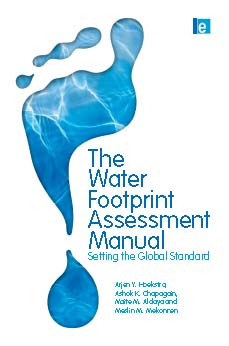 This book by Earthscan contains the global standard for ‘water footprint assessment’ as developed and maintained by the Water Footprint Network (WFN). It shows how water footprints are calculated for individual processes and products, as well as for consumers, nations and businesses. It also includes methods for water footprint sustainability assessment and a library of water footprint response options.
This book by Earthscan contains the global standard for ‘water footprint assessment’ as developed and maintained by the Water Footprint Network (WFN). It shows how water footprints are calculated for individual processes and products, as well as for consumers, nations and businesses. It also includes methods for water footprint sustainability assessment and a library of water footprint response options.
A shared standard on definitions and calculation methods is crucial given the rapidly growing interest in companies and governments to use water footprint accounts as a basis for formulating sustainable water strategies and policies. The current manual is an updated, revised and expanded version of Water Footprint Manual: State of the Art 2009, published by the WFN in November 2009 (Hoekstra et al, 2009a). This new edition has been produced after intensive consultations with partners and researchers worldwide. Directly following the publication of the Water Footprint Manual, all partners of the WFN were invited to provide feedback on the manual.
Eradication of inhuman practice of manual scavenging and comprehensive rehabilitation of manual scavengers in India – A report by Rashtriya Garima Abhiyan
Posted on 21 Apr, 2011 09:15 PM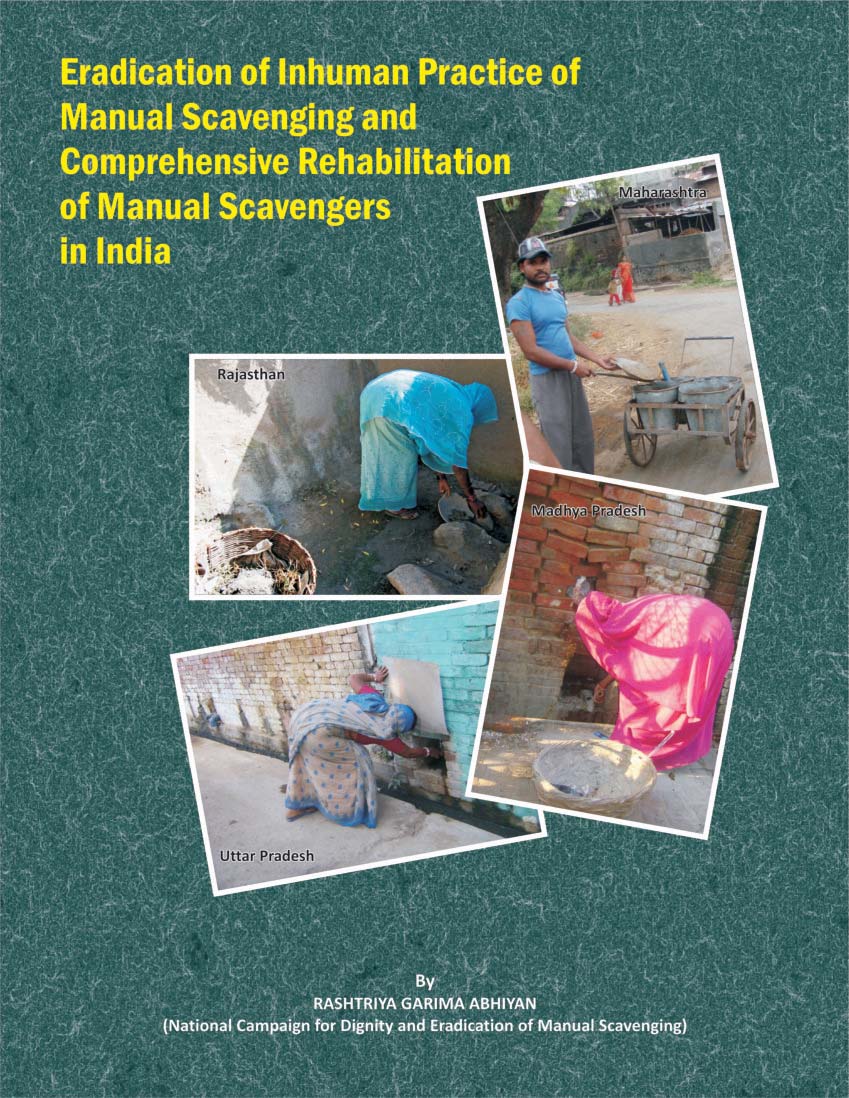 The practice continues in the country in spite of efforts of several people, implementation of government schemes such as the National Scheme for Liberation and Rehabilitation of Scavengers since 1992 and Self Employment Scheme
The practice continues in the country in spite of efforts of several people, implementation of government schemes such as the National Scheme for Liberation and Rehabilitation of Scavengers since 1992 and Self Employment Scheme
The effects of agricultural water and landholdings to rural livelihoods in Indo-Gangetic basin – Research analysis by IWMI and ICAR with an emphasis on Bihar
Posted on 18 Apr, 2011 11:56 PM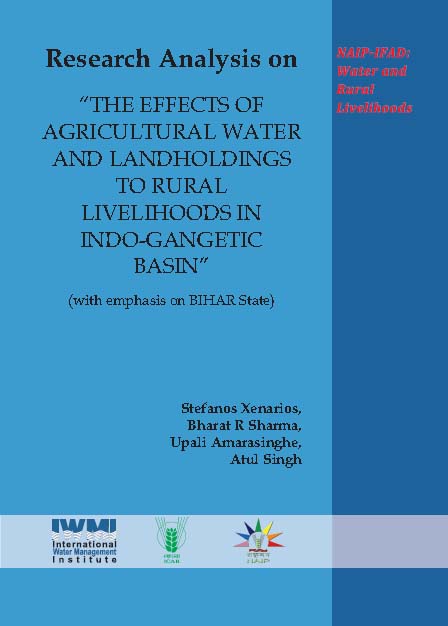 The current research analysis by International Water Management Institute (IWMI) in cooperation with ICAR Resear
The current research analysis by International Water Management Institute (IWMI) in cooperation with ICAR Resear
Scaling up rural sanitation: Findings from the impact evaluation baseline survey in Madhya Pradesh – A report by the Water and Sanitation Program of the World Bank
Posted on 18 Apr, 2011 08:20 AM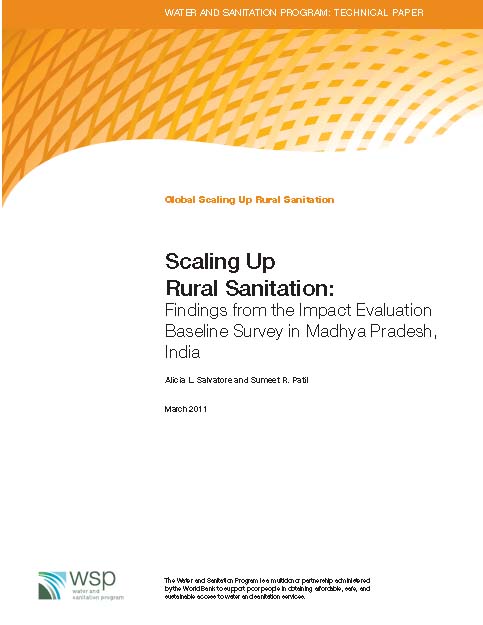 This report by the Water and Sanitation Program (WSP) of the World Bank presents the findings of the baseline and community survey conducted in two districts of Madhya Pradesh (MP) - Dhar and Khargone. The goal of the program is to reduce the risk of diarrhea and therefore increase household productivity by stimulating demand for sanitation in the lives of people. The program also seeks to stimulate the supply of appropriate sanitation program and services by conducting market research and training local artisans to build the relevant facilities.
This report by the Water and Sanitation Program (WSP) of the World Bank presents the findings of the baseline and community survey conducted in two districts of Madhya Pradesh (MP) - Dhar and Khargone. The goal of the program is to reduce the risk of diarrhea and therefore increase household productivity by stimulating demand for sanitation in the lives of people. The program also seeks to stimulate the supply of appropriate sanitation program and services by conducting market research and training local artisans to build the relevant facilities.
In India, the program is supporting the Government of India’s (GoI) Total Sanitation Campaign (TSC) in two States: Himachal Pradesh and Madhya Pradesh. The main components of the intervention include: Community-Led Total Sanitation (CLTS), Social Marketing of Sanitation, Strengthening the Enabling Environment and Nirmal Gram Puraskar (NGP) Awards.
Handbook of fisheries and aquaculture - New book released by Indian Council of Agricultural Research (ICAR)
Posted on 21 Mar, 2011 05:55 PMA book review of "Convenient Action- Gujarat s Response to Challenges of Climate Change " , written by Narendra Modi
Posted on 14 Feb, 2011 12:12 PMThis book is being read by wider professionals all over the globe with interest and many people have also offered their review on the same. Keeping in view the activities of India Water Portal, we feel that it may be of interest for the portal readers to know more about this. One such review of the book written by Prof. D. T. Shete, Former Director, Water Resources Engineering and Management Institute, Maharaja Sayajirao University of Baroda, Vadodara is attached herewith.
Financial aspects of irrigation projects in India – A report by the Central Water Commission
Posted on 13 Feb, 2011 08:28 AM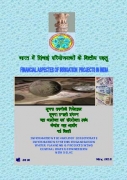 This publication by the Central Water Commission presents data on Major and Medium Irrigation and Multipurpose projects, Minor Irrigation projects, Command Area Development scheme as available in the Finance A
This publication by the Central Water Commission presents data on Major and Medium Irrigation and Multipurpose projects, Minor Irrigation projects, Command Area Development scheme as available in the Finance A
Hydrology in ancient India - A book by the National Institute of Hydrology (1990)
Posted on 07 Feb, 2011 11:51 PM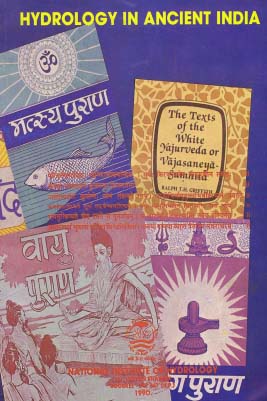 It attempts at compiling information on various component processes of hydrology and their interaction. The report has been divided into nine chapters dealing with different aspects of hydrology.
It attempts at compiling information on various component processes of hydrology and their interaction. The report has been divided into nine chapters dealing with different aspects of hydrology.
Like other sciences, the science of water too was well developed in ancient India. The report regrets that at present sufficient attention is not paid to our ancient Indian sciences. The study of Sanskrit literature indicates valuable references to hydrology and important concepts of modern hydrology are scattered in various verses of Vedas, Puranas, Meghmala, Mayurchitraka, Vrhat Sanhita and various other ancient Indian works.
Some of the key references are as follows –
- In vedic age, Indians had developed the concept that water gets divided into minute particles due to the effect of sun rays and wind. At various places in the Puranas it is alluded that water cannot be created or destroyed and that only its state is changed through various phases of hydrological cycle.
- Evaporation, condensation, cloud formation, precipitation and its measurement were well understood in India in vedic and puranic times.
- Effect of yajna, forests, reservoirs etc., on the causation of rainfall, classification of clouds, their colour, rainfall capacity etc, forecasting of rainfall on the basis of natural phenomenon like colour of sky, clouds, wind direction, lightning, and the activities of animals was well developed in ancient India well before 10th century BC.
- Contrivances to measure rainfall were developed during the time of Kautilya (4th century BC) which had the same principle as that of modern hydrology except the fact that weight measure (of drone, paia etc.,) were adopted instead of modern linear measurement of rainfall.
- Scientific facts like arid region of Tibetan rain shadow area and no rainfall by polar winds was discussed in the puranas. The knowledge of monsoon winds and height of clouds along with the division of atmosphere was well developed in vedic age.
- The technique of knowing the slope of an area by means of a flowing river and dimensions of meandering rivers along with velocity of flow were developed.
- In ancient times, Indians had well developed concepts of groundwater occurrence, distribution and utilization. Literature also reveals that hydrologic indicators such as physiographic features, termite mounds, soils, flora, fauna, rocks and minerals were used to detect the presence of groundwater.
- Variation in the height of water table with place, hot and cold springs, ground water utilization by means of wells, well construction methods and equipment are fully described in chapter 54 of Vrhat Sanhita (Bruhat Samhita) named as ‘Dakargala’. The fact that sun rays, winds, humidity, vegetation etc are the major causes of evapotranspiration was well realized.
- Varamihira in as early as 550 AD presented a simple method for obtaining potable water from a contaminated source of water. Various plant materials along with the sun heating, aeration, quenching of water with fire heated stones, gold, silver, iron or sand were used. The change in the quality of water with the months of year and suitability of water from different sources for various uses were described.
- Efficient water use, lining of canals, construction of dams, tanks, essential requirements for the construction of good tanks, bank protection methods, spillways and other minor aspects were given due consideration in ancient times in India.
- Well organized water pricing system was prevalent during the times of Kautilya.
- Various references are available in the Vedas alluding the importance of efficient water use so as to reduce the intensity of water scarcity and drought.
